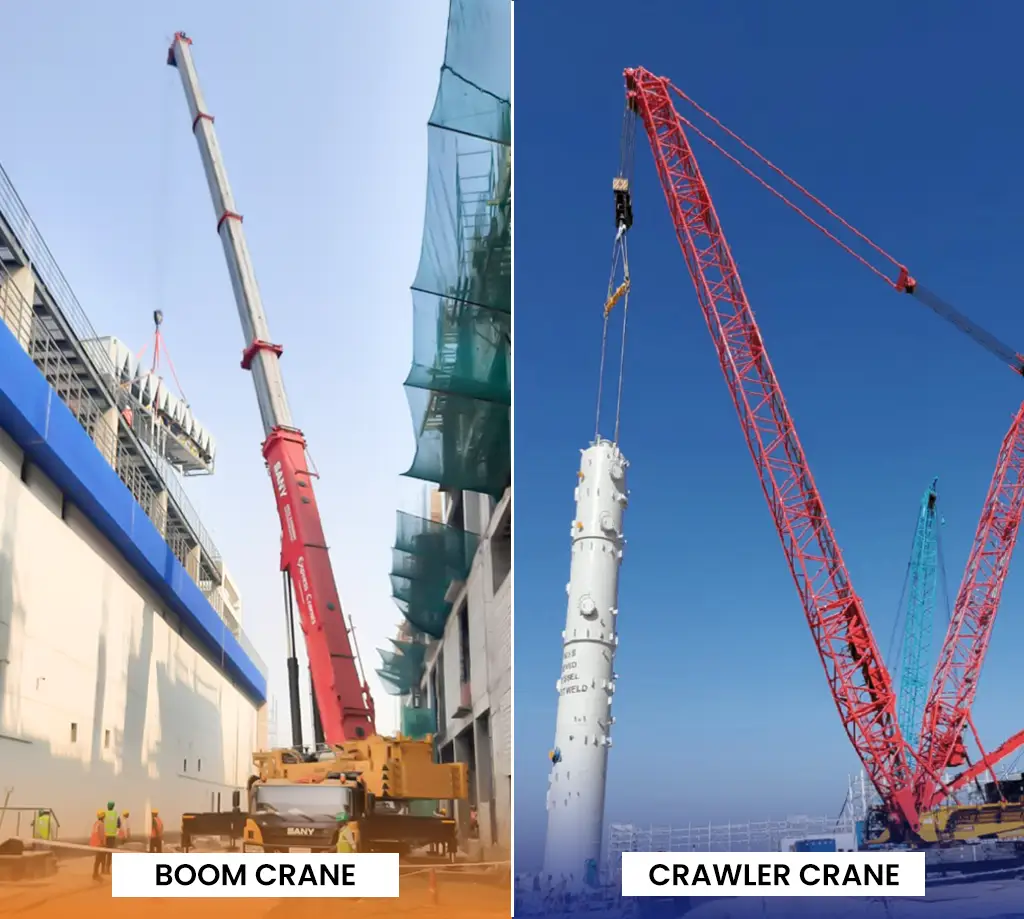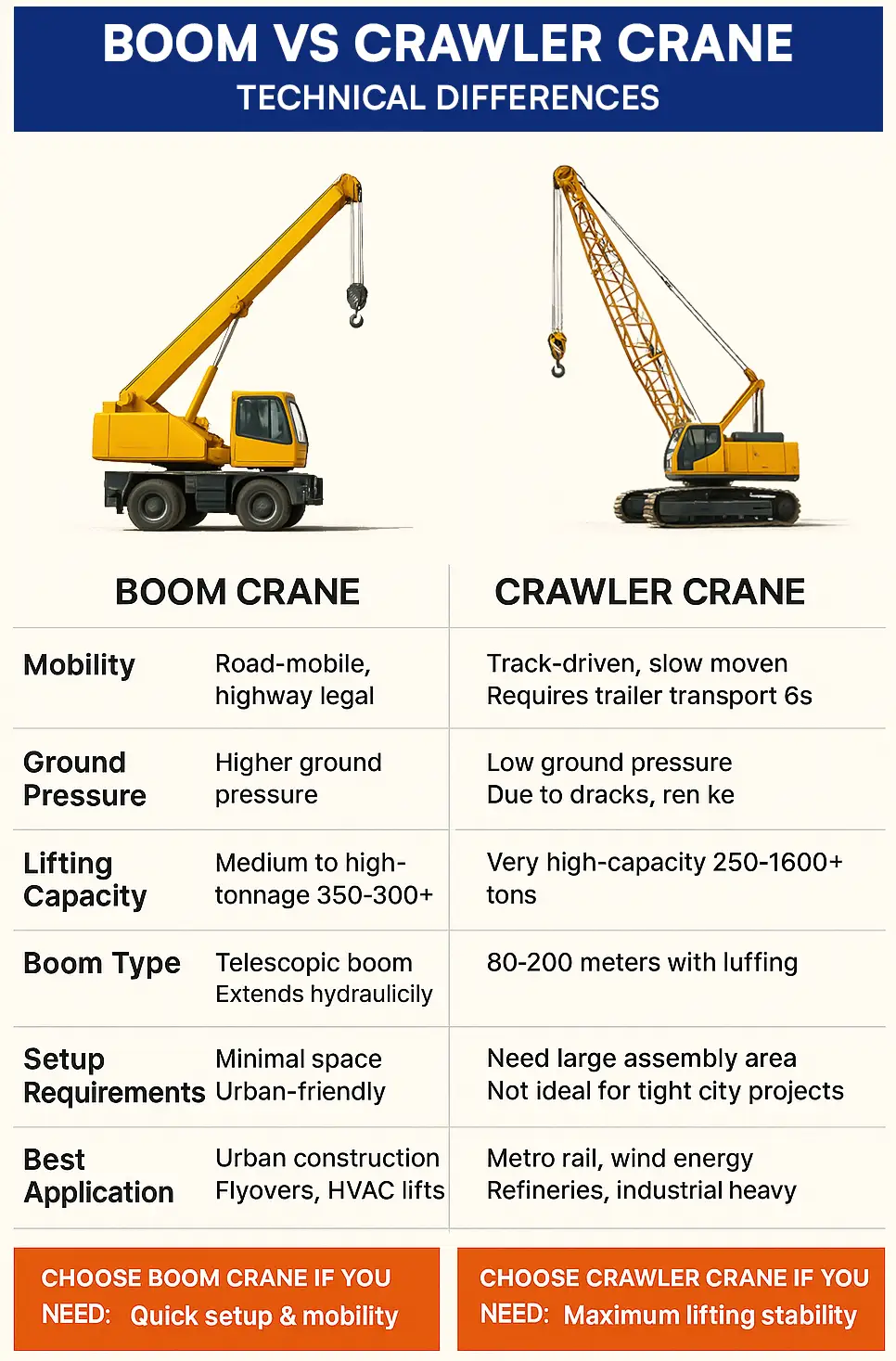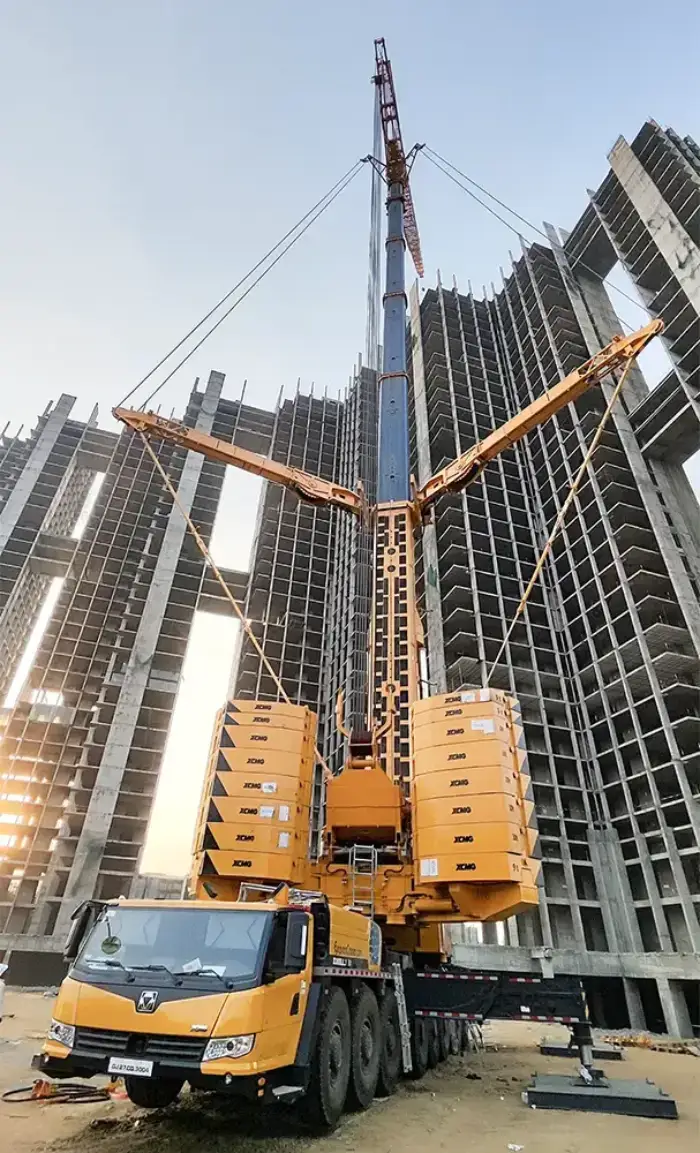Boom Crane vs Crawler Crane: Key Differences, Site Fit & Real Project Insights
November 15, 2025
By Admin
When a project reaches the stage where lifts become the backbone of progress, high-rise glazing, precast segments, tower assembly, machinery placement, the discussion almost always circles back to two machines:
Boom Cranes and Crawler Cranes
It doesn't matter whether it's a metro corridor, refinery expansion, commercial tower, or industrial setup, choosing the wrong crane can slow down operations, alter sequencing, or restrict access. And unlike common “cost” comparisons floating around online, the real decision usually begins much earlier:
- What does the site demand, mobility or stability?
- Height or ground grip?
- Reach or load chart flexibility?
No pricing tables. No rental pitch.
Just real site-based insight, as engineers expect.
What Is a Boom Crane? (Understanding the Workhorse of Height & Reach)
A boom crane commonly known as a telescopic crane, uses a hydraulic boom that extends and retracts like sliding segments.
What makes it powerful:
Rapid setup
- arrives, stabilizes, and starts work quicklyHigh reach
- excellent for urban or vertical projectsFlexible movement
- drives into tight city sitesAdjustable boom length
- ideal for variable-height lifts
You'll see them frequently in:
- High-rise construction
- Tower glazing
- Equipment lifting inside city limits
- Flyover & metro segment handling (short-distance)
- Plant maintenance
- Wind tower auxiliary lifts
Its biggest strength?
Vertical reach with maneuverability.
What Is a Crawler Crane? (Built for Raw Stability & Heavy Lifts)
A crawler crane runs on tracks, no outriggers, no wheels.
What that gives you:
- Unmatched stability
- Superior load handling at low velocities
- Smooth movement under load
- Zero risk of tire slip
- Massive lifting charts (hundreds to thousands of tons)
You'll see them on:
- Metro rail piers
- Refinery modules
- Power plant boilers
- Bridge girder erections
- Large industrial plants
- Heavy civil projects
Its biggest strength?
Pure lifting capacity with ground grip.
Boom Crane vs Crawler Crane: A Practical Engineering Breakdown
Think of this as a site-driven checklist, not a theoretical comparison.
1. Terrain
Site Type |
Better Choice |
Why |
| Soft soil |
Crawler |
Wide tracks distribute load |
| Urban concrete |
Boom |
Outriggers + mobility |
| Rocky uneven terrain |
Crawler crane |
Self-stability without outriggers |
2. Mobility Inside Site
- Moves fast, easy navigation, fits between obstacles
- Slow, long turning radius, needs planned pathways
If movement matters → boom wins.
If stability matters → crawler wins.
3. Lift Height vs Load Capacity
- Boom cranes win in height
- Crawler cranes win in load charts
High-rise = boom
Heavy industrial = crawler
4. Setup Conditions
Boom cranes:
- Faster setup
- Less assembly loading for boom operation
- Works in space-restricted areas
Crawler cranes:
- Long setup time (superlift, tracks, boom assembly)
- Needs to have considerable laydown area
5. Operator Control & Precision
- Telescopic booms = precision at height
- Lattice boom crawlers = stability and radius power
Real Case Study: Gurugram High-Rise Lift (900T Telescopic Equipment)
One of the most telling examples of crane selection came from a major lift in Gurugram at the Oberoi Site, where engineers needed to move heavy elements to a staggering height.
Project Requirements
- 900-ton telescopic boom crane
Main Boom:
78.2 metersLuffing Jib:
91 metersLuffing Jib:
91 meters
Why Not a Crawler Crane Here?
Because the site was:
- tight and urban
- surrounded by high-rise structures
- requiring rapid relocation inside a narrow footprint
A crawler crane would have needed:
- huge assembly space
- additional mobilization days
- blocked surrounding construction activities
Why the Boom Crane Won
- Reached 160 meters efficiently
- Stabilized on limited space using outriggers
- Required far fewer ground preparations
- Allowed repositioning without dismantling
Outcome
The lift was executed smoothly with minimal disruption to site movement, something only a telescopic boom could achieve in such an environment.
This case alone shows why terrain, space, and height matter more than capacity on paper.
When to Choose a Boom Crane (Engineer's Checklist)
Choose a boom lifting equipment if your site needs:
- High vertical reach
- Quick mobilization
- Tight working areas
- Multiple lift points at different heights
- Precision lifting at elevation
- City-based construction
Talk to a crane expert
When to Choose a Crawler Crane
Choose a crawler crane if your project involves:
- Heavy modules (industrial/refinery)
- Long-duration lifts
- Soft ground
- Infrastructure megaprojects
- Large-radius or complex arc lifts
- No strict space constraints
Final Decision: Which Crane Fits Your Site?
Here's the truth most guides avoid:
Neither crane is “better”, the site decides.
If you need:
- reach + mobility → Boom Crane
- load + stability → Crawler Crane
Engineers choose cranes based on:
- soil bearing capacity
- access limitations
- lift radius
- lift height
- load weight & distribution
- obstructions
- project timeline
And the Gurugram project proves that even massive lifts can favor a boom crane depending on the constraints.
Contact now
Final Decision: Which Crane Fits Your Site?
The debate isn't about boom vs crawler.
It's about finding the crane that matches the site, the lift, and the operational environment.
This blog gave a practical, real-world comparison backed by an actual project scenario, helping engineers, supervisors, and project managers decide with confidence.


